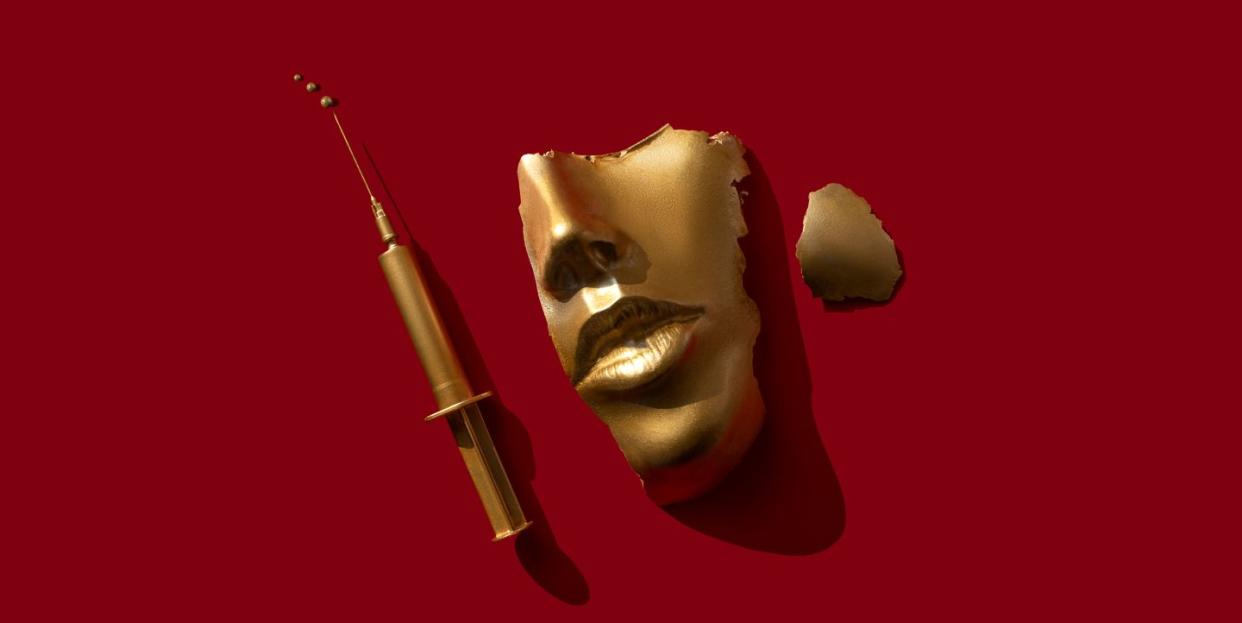Steven Williams, President Elect of the American Society of Plastic Surgeons, Talks Diversity in Plastic Surgery and What’s Trending for 2023

Long dominated by white, male doctors of a certain age, plastic surgery is finally getting a face-lift of its own. On the heels of The Aesthetic Society announcing its first female president earlier this year, the field is celebrating another historic appointment, as Steven Williams, a board-certified plastic and reconstructive surgeon in Dublin, California, is named the first African American president elect of the American Society of Plastic Surgeons, a 91-year-old organization comprising more than 93 percent of the country’s board-certified plastic surgeons.

Williams will assume the role of president in 2023. “Being the first African American plastic surgeon to serve as ASPS president is a wonderful honor,” Williams tells us. “It’s always refreshing to break through barriers, of course, but it’s also so important for the younger generations coming up to see people who they relate to in these positions of leadership.”
In conversation with BAZAAR.com, the future president opens up about the lack of Black representation in plastic surgery, explains why racial commodification in aesthetics is nothing new, and shares his beauty predictions for the year ahead.
Minority groups have historically been underrepresented in plastic surgery. How have you seen the field diversify during your time in medicine?
When you consider diversity now versus years ago in terms of representation in plastic surgery residency programs, interestingly, there have been substantial gains in female plastic surgeons, as well as Hispanic and Asian plastic surgeons, but we’re not seeing those same changes for African Americans.
In the 1960s, about 3 percent of medical school enrollees identified as African American. By 2009, that number rose to about 7 percent. But when we look at the field of plastic surgery specifically, we see, according to a 2009 study, that 3.7 percent of plastic surgery residents identify as African American. As for the number of board-certified African American plastic surgeons in practice today, it’s probably around 2 to 3 percent. Meanwhile, the current number of people who identify as African American getting plastic surgery is 11 to 12 percent.
Do you think it’s important for patients to be able to identify with their surgeon?
There are studies showing that patients get better care and better results when they have a solid connection with their providers. It’s also been shown that things like race similarities and gender preferences are important considerations when patients are seeking a physician. But as society becomes more diverse, it’s important not necessarily that there’s a surgeon who identifies with your race, gender, sexual orientation, or religion, but that we, as a profession, are receptive to and understanding of all of the elements that make each patient unique.
In the past, certain device-based and injectable treatments haven’t prioritized patients of color. Are cosmetic procedures becoming more equitable and inclusive?
Traditionally, when we’re looking at how injectables and devices are developed and tested for safety, it’s largely on Caucasian populations of patients—there’s not much inclusion of other skin types. Especially with devices—there’s really a dearth of studies in those underrepresented populations. Some of it has to do with the way lasers work: Their energy is absorbed by pigments in the skin that are sensitive to laser light, which makes treatments targeting brown or red pigments more challenging in people with darker skin.
But I think patient interest is definitely there for more equitable and safer technologies that take care of the entire spectrum of patients. While the industry is getting better with this—and there are some devices that can be effective across skin types—we’re not completely there yet.
Much has been written lately about plastic surgery’s commodification of characteristically Black features. How do you see societal preferences evolving? Are we moving away from treatments, like exaggerated BBLs and lips fillers, that are thought to “commodify” features typically associated with Black and Brown communities?
Commodify is probably not the term I would use. And I don’t think what we’re seeing now is anything new, really. In plastic surgery, there’s been a “commodification” of Eurocentric features forever. Rhinoplasty is a prime example. Is what’s happening now unique because the features in question are those that we identify with an underrepresented minority population? It’s a very complicated topic, but I find it refreshing when the world can see beauty in things that are outside of the Anglo-Saxon standards that have limited some patients for so long.
I don’t necessarily see [changing BBL and lip filler trends] as a racial or diversity-inclusion-equity issue. I view it as more of an evolution of technique. When a new product or surgery comes out, we tend to see more intense applications of it initially. But as it matures, people begin to realize, “Well, maybe I don’t want the more extreme result; perhaps I want a little more balance.” Social media has poured gasoline on the general life span of trends, accelerating this whole process. But ultimately, I think we, as plastic surgeons, need to encourage patients to find their own definition of beauty.
Looking ahead to 2023, how might an impending recession affect plastic surgery?
With increasing layoffs and recession talk, we are noticing a little bit of a pivot. People are beginning to combine fewer surgeries. If they were looking at doing a BBL with a tummy tuck and a breast augmentation, maybe they’re holding off on one or two of the surgeries and focusing on the one thing that bothers them most.
Since face-lifts tend to be pursued by patients who are a little bit older with more resources, these procedures are usually more resistant to economic pressures.
In the medspa space, we’re predicting a downturn in filler use. There is some historical evidence for this—as the economy tightens, people continue to get their neurotoxin [like Xeomin, Botox, and Dysport], but they may hold off on their filler, which is typically more expensive.
Any other plastic surgery predictions for the year ahead?
I think we’ll continue to see patients seeking more natural, nuanced results, especially with BBLs. So rather than wanting to look like a Kardashian, they’ll be more concerned with rounding out their hip dips or adding just a little bit of volume.
With filler, too, patients are recognizing that less is more. This isn’t to say that fillers are “out”—they’re still very popular, especially tear trough injections and lips. But we’ll be seeing more reasonable results that make it harder to say if someone has had something done.
ASPS works closely with the FDA, and it’s clear that they are stepping up and getting more aggressive about device regulation. There’s been a lot of discussion about skin-tightening devices, radiofrequency devices, breast implants—and I think they’re going to start looking more closely at claims and applications, and really making sure these popular devices are safe and meeting the expectations that industry leaders are setting.
I believe self-confidence and identity will continue to drive the demand for cosmetic procedures, as people get more comfortable using plastic surgery to take control of their appearance and to improve the alignment between how they feel on the inside and how they look on the outside.
This interview has been condensed and edited for clarity.
You Might Also Like

